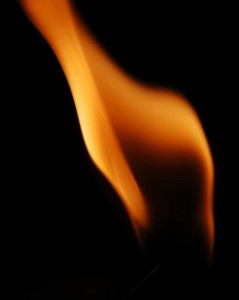Understanding the Anatomy of Your Chimney
Many people have fireplaces and chimneys in their homes and trust that they will always work as they are supposed to. However, there are many ways that a chimney could malfunction and it is important to understand exactly how this occurs. In order to maintain a safe chimney, homeowners should be familiar with the parts of their chimney and how they function. This will help them to quickly identify any issues that may arise and help you communicate with a certified professional.
At the very top of the chimney, there is a piece called a spark arrestor. This will keep sparks from leaving the chimney. A small spark may not seem like a big deal but, with the proper wind, a hot spark can quickly turn into a big fire. If this occurs on the roof, the fire will spread not only throughout the home, but it could also quickly jump to the neighbor’s home. Even very warm ash leaving the chimney can start a fire in this way, making the spark arrestor a vital piece of chimney safety.
Also at the top of the chimney is a cement piece known as the chimney crown. This protects the upper layer of bricks on the chimney. More importantly, it helps keep foreign material out of the chimney. In addition to many other substances, it keeps excess moisture from entering the chimney, which can cause a great deal of structural damage. In addition to the chimney crown, many people also choose to use a separate chimney cap.
The long part of the chimney, which allows smoke out of the fireplace, is known as the flue. Inside of the flue is a long piece called the flue liner. This liner helps protect the flue from general wear and tear as well as damage from water. Liners come in a variety of materials, including clay, tile, and stainless steel. However, stainless steel is typically considered the best choice because it is the most durable and lasts the longest.
Inside of the chimney is a piece called the damper. The damper opens and closes the flue, either letting smoke out or trapping it in. It is very important to make sure that the damper is always open when burning a fire in the fireplace. Leaving it closed will quickly fill the entire home with smoke and dangerous gas.
Also inside of the chimney is a smoke shelf. This is a small piece that catches material falling through the chimney. This could be anything from ash to debris from animal nests inside of the chimney. If these materials find their way into the fireplace, they could start a dangerous blaze that quickly gets out of control. It is very important to make sure that the flue is always clear of all debris, but the smoke shelf provides extra protection in the event that anything does make its way in there.
When material burns in the fireplace, it creates combustible gas. The smoke chamber compresses the gas so that it does not create a back draft. Without it, the gas may enter the fireplace or the home, causing both health and safety risks for the entire household.
There are many different parts to a chimney and each plays and important role in the safe use of the fireplace. In order to use the chimney and fireplace without incident, homeowners should understand exactly how each piece works and what it does. This will make it possible for them to quickly identify any problems and decide what action needs to be taken before using the chimney again.

